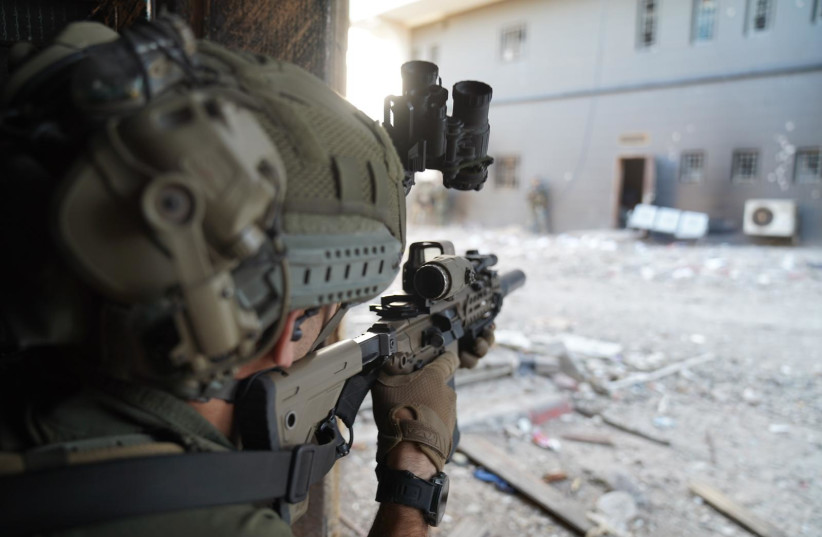This is how Israel’s navy seals took over al Shifa Hospital
One of the most critical components of the IDF’s two-week operation to take over Shifa Hospital in northern Gaza from over 1,000 terrorists was the direct participation of the Shayetet 13 special forces unit – Israel’s navy seals.
Although Shayetet 13 has special additional training for combat at sea, it has also been used for decades for special high-profile or precision operations on land.
However, the current war is the first time Shayetet 13 essentially became an additional long-arm of a regular infantry division, Division 162, commanded by Brig. Gen. Itzik Cohen.
After nearly six months of fighting together, Cohen has a fantastic operational relationship with Col. “A,” the commander of Shayetet 13.
One of Shayetet 13’s early missions in the war, taking over the Qatar hospital building, is now viewed as having emerged as a paradigm shift that became a model for the takeovers of many other Gaza hospitals that terrorists were using as command centers in violation of the laws of war.

The al Shifa compound
This violation was so pronounced during the recent two-week reinvasion of Shifa (the IDF initially took it over in mid-November) that now top officers do not even refer to Shifa as “Shifa Hospital” but as “the Shifa compound” to reflect their belief that it was not so much an abused hospital as a command center with some hospital camouflage built around it.
IDF sources described how field intelligence from the Shin Bet, Division 162, and Shayetet 13 itself worked together to track the growing trend of terrorists building a new large command center at Shifa.
The three centers of gravity for the terrorists were the Qatar facility, the emergency room, and the childbirth center – though there were terrorists in every single one of the sprawling hospital’s buildings.
According to the IDF, they gave the mostly 6,200 civilians and terrorists at least two separate opportunities to surrender.
The IDF preferred to avoid violence. It also desired the “win” of capturing and interrogating Hamas officials to obtain intelligence.
Shayetet 13 was the first to enter the Shifa area, nailing down and isolating the area in a mere 15 minutes at the start of the operation. The same forces were then the first, after the IDF’s much larger divisional forces reinforced the siege zone, to penetrate the specific hospital buildings where the most Hamas terrorists were expected to be.
According to the IDF, Hamas not only fired mortars at the IDF, in disregard of the harm to the hospital buildings, but also used patients and doctors as human shields.
The IDF said that Shayetet 13’s special training could be credited for the successful evacuation of the patients and doctors without them being harmed, even as they fought off the Hamas terrorists.
These patients and doctors were moved to a pre-setup field hospital.
Moreover, the IDF said that those terrorists who did not surrender fought very hard, and several of them exploded themselves with grenades to try to kill nearby IDF troops.
Although this killed no Shayetet 13 soldiers, there were six wounded naval commandos, and these tactics also wounded two more Nahal soldiers.
There were also some deaths among regular infantry in the fighting in areas near Shifa.
The IDF believes that despite the terrorists’ return to Shifa after the first IDF takeover in November, this recent operation was the most single damaging operation to Hamas of the war and will prevent them from taking the risk of returning to Shifa a third time in any significant numbers.
Still, the IDF said that the war is far from over and that it will need to continue to actively pursue Hamas in a variety of areas once the terror organization regroups.





Comments are closed.